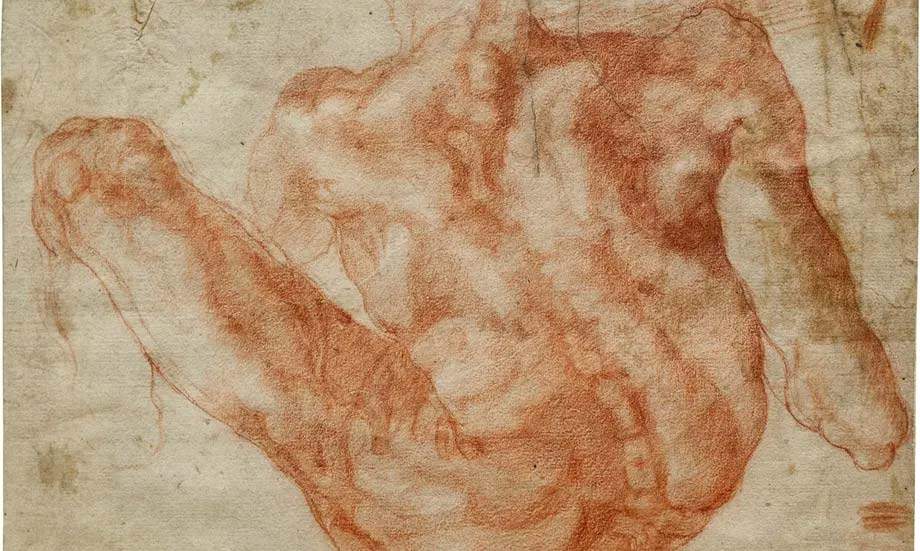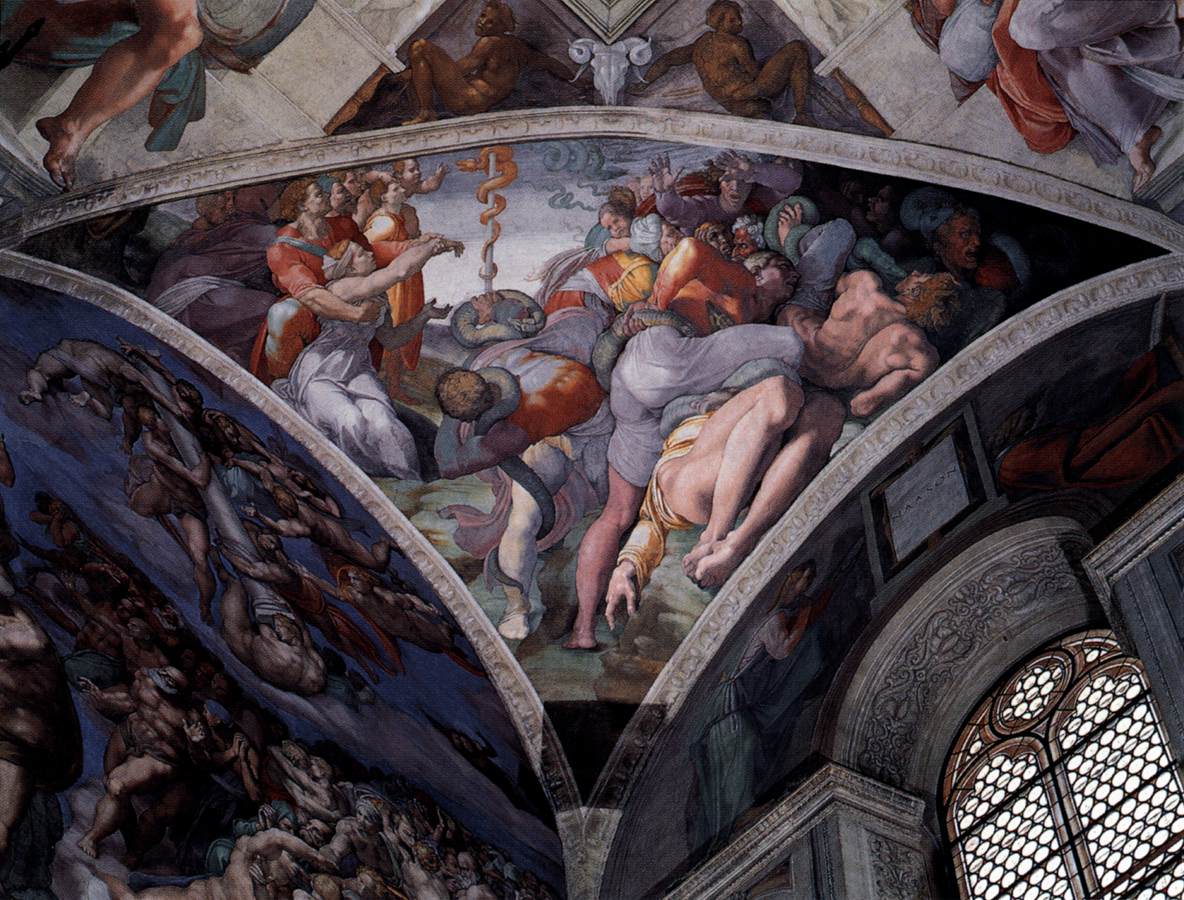British art historian Paul Joannides, a specialist in Renaissance drawing with monographs and studies of the drawings of artists such as Raphael and Michelangelo to his credit, has announced that he has discovered what he believes is a rare preparatory drawing for the vault of the Sistine Chapel. It is a sheet drawn in sanguine that depicts a nude man, seen from behind: according to Joannides, it was executed in preparation for the creation of the fresco with the Bronze Serpent. Specifically, it would be a study for the figure of the nude man seen from behind, slightly rotated from the figure in the drawing, in the right portion of the fresco.
According to Joannides, who announced his hypothesis to theObserver, it could be dated to 1512, that is, to a period just before the end of the work, which began in 1508. The scholar, professor emeritus of art history at the University of Cambridge and author of several scholarly contributions on Michelangelo, anticipated that he would outline his theory in a forthcoming article in Burlington Magazine.
“For an artist of Michelangelo’s greatness, and such greatness as a draughtsman,” he told theObserver, “every new discovery involves a certain level of excitement. But this is a drawing by Michelangelo for one of the greatest masterpieces of Western art.” Indeed, few preparatory drawings for the Sistine Chapel have survived. The sheet in question (small in size: it is 15.7 by 19.3 centimeters) was discovered by Joannides after its owner, a private collector who had purchased it in 2014 with attribution to Rosso Fiorentino (in fact, Joannides himself acknowledges that the figure has some weaknesses such as the almost impossible pose, the left thigh being too long, and the “block-like” representation of the vertebrae: it was probably these details that justified the attribution to a master as important as Rosso but not to Michelangelo, although, Joannides explains, Buonarroti was more concerned with dynamic expression than anatomical fidelity), sent him a photograph through an intermediary. Joannides recalled seeing it in an old black-and-white image at the Witt Library of the Courtauld Institute in London. “I had mentally filed it away as ’interesting,’” he revealed. “So it was intriguing to be able to study the drawing live and satisfying to conclude that it was indeed by Michelangelo.”
“Looking at the drawing,” the scholar added, “one might assume that the figure was intended to be viewed horizontally. It isn’t. It is intended to be seen with the drawing rotated ninety degrees clockwise. Put the two images side by side and there it is. Once examined, it was obvious that it was a preparatory drawing for this figure.”
The history of the sheet is not known exactly, but it bears some marks: the most important is an initials, “JCR,” which according to Joannides is related to Sir John Charles Robinson, a painter, engraver and art collector who lived between 1824 and 1913 and was known to have been a connoisseur of Michelangelo’s drawings. And so he may also have an illustrious affair behind him, which will have to be investigated.


 |
| England, discovered drawing that Paul Joannides says is by Michelangelo for the Sistine Chapel |
Warning: the translation into English of the original Italian article was created using automatic tools. We undertake to review all articles, but we do not guarantee the total absence of inaccuracies in the translation due to the program. You can find the original by clicking on the ITA button. If you find any mistake,please contact us.